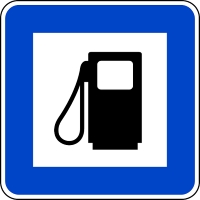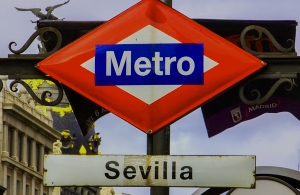Spain is in comparison to many other holiday countries around the Mediterranean rather cheap. At least the majority of things are cheaper in Spain than in France or Italy. If you come from expensive regions in Germany, e.g. from Munich, the prices in Spain are probably felt to be somewhat lower. If you come from Berlin or the Ruhr area, the prices in Spain are about the same. In our opinion, accommodation is best booked at Booking.com (very large selection, often very reasonable prices).Many individual prices (accommodation, restaurants, public transport, etc.) can be found in Michael Müller’s travel guides.
Anyone shopping in Spain will find prices similar to those in Germany – especially at discount stores. The European single market has also led to a significant convergence of prices in the food sector. Nevertheless, there are regional differences, especially in tourist areas.
Supermarket prices in Spain
Similar to us, there are cheap supermarkets in Spain with a very low price level. As in Germany, these include Lidl and Aldi, but also some Spanish chains. There are also grocery stores with slightly higher prices, good service and branded products. These include, for example, the food department of El Corte Ingles. The largest Spanish department store chain usually has a great selection of groceries in its basement. In general, there are hardly any things in Spain that are much more expensive or cheaper in the supermarket than in Central Europe.
The European internal market seems to lead more and more to similar prices. As in Germany, you will often find smaller shops in Spain that have longer opening hours and in some cities (not everywhere) also open on Sundays. These have, like e.g. a late purchase in Berlin, comparatively higher prices. In the tourist regions such small shops often sell many alcoholic beverages in the late evening.
>>> Here you can get the online-tickets for the stadium Barcelona
Supermarket Prices
Discounters: Affordable and Widely Available
Well-known discounters such as Lidl and Aldi are now present throughout Spain. There are also Spanish chains with similarly low prices, for example:
Mercadona (very popular, large selection, good own brands)
Dia (discount store format with simple branches)
Alcampo (part of Auchan, similar to Real or Kaufland)
Typical prices at discount stores (as of 2025):
1 liter of milk: €0.85–€1.10
1 kg of bread (baguette or rustic country bread): €1.00–€2.00
1 kg of tomatoes: €1.50–€2.50
1 kg of chicken breast: €5.00–€7.00
6-pack of beer (0.33 l): €2.50–€4.00
1 bottle of wine: from €2.00 (good quality often starting from €3–€4)
Higher-priced supermarkets: brands and selection
Those who value selection, branded products, and presentation more will find, for example, For example, El Corte Inglés has a very high-quality grocery department (often on the lower level). Carrefour is also a popular choice for larger purchases and international products.
Here you pay:
approximately 10–20% more than at a discount store
but you get many international products, organic items, and often better customer service
Small shops: Open late, but more expensive
Many cities have small convenience stores or 24-hour shops, which are often open on Sundays – which is not common everywhere in Spain.
These shops are similar to German Spätis and have:
longer opening hours
often higher prices, especially for snacks, drinks, and alcohol
In tourist areas, such shops are particularly busy in the evenings – they often offer:
chilled drinks, ice cream, snacks
alcohol even after 10 p.m. (often no longer permitted in Germany)
Conclusion: Supermarket prices in Spain
| category | Price level (vs. Germany) | remark |
|---|---|---|
| discounter | similar or slightly cheaper | Lidl, Aldi, Mercadona, Dia |
| Branded products | sometimes a bit more expensive | Especially with imported goods or organic |
| Wine & Beer | usually cheaper | Good quality from 2–4 euros per bottle |
| Fruit & Vegetables | seasonally cheap | Lots of local and fresh |
| Late-night shops | more expensive | Comfortable, but with a surcharge |
>>> Here you can find the online tickets for the Barcelona Stadium

Prices in Gastronomy in Spain
As with us, the prices in the restaurants in Spain vary greatly. If one goes to a normal Spanish restaurant, one often pays around 20 euros with starter and drink. Of course, there are also luxury restaurants in which one pays a multiple of it. But it is also much cheaper. If one wants to eat Spanish, one can visit a tapa bar. Here, one finds some small dishes for a few euros. If one is very hungry, one needs some small plates, which does not make the thing really cheap.
A very cheap alternative is Spanish cities are often Asian restaurants. Here one gets a choice of menus with starter (soup or spring roll), a main course and a small dessert for mostly clearly under 10 euro. We have already seen prices of 5.95 for such a 3-course menu (as of year 2015). Spanish taverns and restaurants also very often offer a “Menu del Dia” for less than 10 Euro. This often includes 2 or 3 courses and a simple drink. In general, prices in restaurants in Spain have become cheaper since the economic crisis. Sometimes there is a menu at lunchtime with lower prices.
 The paella is like the national dish in Spain.
The paella is like the national dish in Spain.
Eating out in Spain can be very cheap – but also expensive. Price differences depend heavily on the location, type of restaurant, and location. In tourist hotspots like Mallorca or Barcelona, you’ll pay more than in the interior or in smaller towns. Nevertheless, Spanish dining remains generally affordable by international standards.
Average Restaurant Prices
A meal in a typical Spanish restaurant with:
Appetizer
Main Course
Drink
costs an average of around €25–35 per person. In upscale restaurants or for fish and meat specialties, it can, of course, be significantly more.
If you want to save money, eat lunch instead of dinner – many restaurants offer affordable set menus or daily specials.
Menu del Día – The Affordable Lunch Menu
The “Menu del Día” (menu of the day) is a tried-and-tested and popular way to eat well and affordably:
2 or 3 courses (e.g., soup, main course, dessert)
Includes bread and a drink
Price: usually between 10 and 15 euros
These menus are available Monday to Friday in many Spanish taverns, restaurants, and bars – especially outside of tourist areas.
Tapa Bars: Small Dishes, Large Selection
Tapas are small portions – ideal for sampling or sharing.
Individual tapas usually cost 2 to 5 euros.
If you want to fill yourself up, you usually need 3-5 portions.
In tapa bars, this can quickly add up to 15 to 25 euros per person – depending on the selection and drinks.
Tip: In some regions (e.g., Granada), a small tapa is included free with every drink.
Asian Restaurants – Lots of Food for Little Money
Asian restaurants, especially Chinese or Japanese all-you-can-eat buffets, are widespread in Spain:
3-course meals with starter, main course, and dessert often start at €10–15.
Buffets (some with sushi and grilled food) for €12–20.
They offer good value and can be found in many cities.
Fast Food in Spain
International chains such as McDonald’s, Burger King, KFC, or Domino’s Pizza are widespread in Spain.
Prices are comparable to those in Germany:
Meal at McDonald’s: €7–9.
Individual burgers: from €1.50.
Taco Bell offers affordable Mexican dishes – unfortunately, so far only in larger cities such as Madrid, Valencia, or Málaga.
In tourist areas (e.g., Ballermann, Costa Brava), there is also German fast food, including currywurst and doner kebabs. Outside these regions, the selection is more international.
Drinks in bars and pubs
Alcoholic drinks are generally somewhat cheaper in Spain than in Germany – especially beer and wine.
| beverage | Average price (cash) |
|---|---|
| Small beer (caña) | 2.00–3.00 euros |
| glass of wine | 2.50–4.00 euros |
| Long drink | 6.00–9.00 euros |
| cocktail | 7.00–12.00 euros |
Many bars offer happy hours, where long drinks or beer are cheaper.
In German-influenced holiday resorts, you can often find German beers such as wheat beer or pilsner. These usually cost a bit more than local brands.
Conclusion: Eating out in Spain – for every budget
Whether it’s a cheap tapas bar, a Chinese menu, or an upscale restaurant – everyone will find something to suit their budget in Spain:
Lunch menu (Menú del Día): top value for money
Tapas: delicious, but often more expensive than expected
Fast food: same prices as in Germany
Bars: drinks are usually cheap, German beers are more expensive
Tip: Affordable parking at the airportMany vacationers drive to the airport and want to park their car affordably during their vacation. Parking spaces at German and other airports can be booked inexpensively on this great website: parken-und-fliegen.de |
Of course there is also fast food. It is noticeable that outside the tourist regions there is considerably less fast food in Spain than along the holidaymakers’ beaches. At the Ballermann and in other German influenced areas there is also the Currywurst with French fries like at home. Otherwise, international fast food is more popular in Spain. By that we mean things like hamburgers, hot dogs and pizza. The prices for these are about the same as in Germany. McDonalds, Burger King, Kentucky Fried Chicken and others have many branches in Spain. Always a bargain was for the monthly changing offer at Burger King – a Burger Menu with fries and drink for 3.99 euros (early 2015). Our favourite fast food chain is Taco Bell with very cheap Mexican food. Unfortunately, Taco Bell is only available in a few cities in Spain.
The pubs and bars in Spain have a similar price level for alcoholic beverages as in Germany. Beer and wine are usually affordable, beer is now drunk more often than wine. Long drinks and cocktails are more expensive, but often there is a happy hour or something similar. In very touristy streets the many pubs undercut each other with special offers. Sometimes a small beer of a certain, mostly Spanish, brand costs only 1 or 1.50 euros. Those who go to German holiday regions also get German beer incl. wheat beer (Weißbier). These beers are sometimes a few cents more expensive than the Spanish barley juices.
Prices for accommodation in Spain
Hotels and other accommodation in Spain are subject to fierce competition. In the high season the prices for the same room are often many times higher than in the low season. Those who don’t come in July, August or September can often find a bargain in the holiday regions. In winter, one often finds here nice double rooms for less than 30 euros. The same room in a 3-star hotel can cost well over 100 euros in August. One should pay attention to the hotel price in Spain absolutely which things are inclusive. Often, breakfast or internet (WIFI) cost extra.
In big cities like Barcelona or Madrid, one also finds more and more private hostels (for example youth hostels). Here, most of the year, one gets a bed in the dormitory (international dormitory) for 8 to 20 euros. Those who want to spend their whole holiday in one place in Spain will usually get away better with a package holiday. Flight and hotel extra book is usually more expensive. Of course, booking on location has the advantage that one can have a look at the hotel and the rooms beforehand. In not a few hotels, one can also haggle over the price. If one comes in the evening, one has a good starting position. Then, it is unlikely that the hotel owner can rent the room to another person.
In our opinion, the best website to book hotels in Spain is Booking.com. Here you can now choose from almost 50,000 hotels and other accommodations such as holiday apartments and hostels.
Accommodation Prices in Spain (as of 2025)
Prices for hotels and vacation rentals in Spain fluctuate greatly depending on the season, location, and type of accommodation. Demand is particularly high in popular regions on the Mediterranean coast, the Balearic Islands, and the Canary Islands in summer, which has a significant impact on prices.
Seasonal Prices
During peak season – that is, the months of July, August, and sometimes September – prices often rise dramatically. A double room in a 3-star hotel, which costs less than €50 per night in winter, can easily cost over €120 in summer.
In the off-season (especially November to March), however, you can find real bargains:
Inexpensive guesthouses from €25
2-3 star hotels often for €35-60
Vacation apartments for two people from approximately €40-70 per night
Those who are flexible with their time can save a lot of money with a little research.
Consider Extras
When booking a hotel in Spain, it’s important to carefully consider what’s included. Breakfast, Wi-Fi (usually called WIFI in Spain), and air conditioning are often not included. Tourist tax (common in Catalonia, Mallorca, and the Canary Islands) is sometimes added on-site when booking.
Hostels and Dormitories
In cities like Barcelona, Madrid, Valencia, and Seville, there are many hostels with shared dorms, which are particularly popular with young travelers.
A bed in a dorm usually costs between €15 and €30.
During high season or during festivals, however, it can be more expensive.
Many hostels now offer private rooms with private bathrooms in addition to shared rooms.
Vacation Rentals and Apartments
Vacation rentals through platforms like Airbnb or Booking.com are popular and often cheaper than hotels – especially for families or groups.
Tip: Booking early is a good idea – good, affordable apartments book up quickly, especially in coastal towns like Nerja, Alicante, or Sitges.
Package tour or self-booking?
Booking flights and hotels separately often offers more choice and flexibility – but doesn’t always mean paying less. Package tours are often cheaper, especially during peak season or for all-inclusive vacations, as tour operators purchase long-term reservations.
Booking directly in person?
In the off-season, it can be worthwhile to book locally, especially in smaller towns.
Some hotels offer discounts for last-minute bookings. Those arriving in the evening sometimes even have a chance to negotiate – as the likelihood of a room being rented at short notice is slim.
In our opinion, the best online site for booking hotels in Spain is Booking.com. Here, you can choose from almost 50,000 hotels and other accommodations, such as vacation apartments and hostels.
Prices Cigarettes Spain
Who still smokes, so humans are supposed to give it, gets his cigarettes in Spain somewhat more favorably than in Germany. A pack of 20 cigarettes, which cost 5.40 Euros in Germany, costs about 4.50 Euros in Spain. So cigarette prices in Spain are about 20 percent lower than in Germany. Like the cigarette prices also the tobacco prices (turning tobacco) are slightly lower in Spain than with us. (Status of this information at the beginning of 2015).
Cigarette Prices in Spain
Those who smoke and vacation in Spain can enjoy slightly cheaper cigarette prices. Although prices have risen here in recent years, smoking in Spain is still somewhat cheaper than in Germany.
How much does a pack of cigarettes cost in Spain?
In 2025, the average price for a pack of 20 cigarettes in Spain will be around €5.00 to €5.50, depending on the brand.
In Germany, the same pack now costs around €7.00 or more. This means that cigarettes in Spain are currently about 20–30% cheaper.
Rolling Tobacco and Other Tobacco Products
Fine-cut and rolling tobacco are also cheaper in Spain than in Germany.
A 30g pack costs an average of €4.00 to €5.00.
In Germany, you often pay over €6.00 for it.
Travelers should check the carry-on limits, as importing larger quantities into Germany is only permitted to a limited extent – however, within the EU, generous allowances for personal use apply.
Sale only in tobacco shops
In Spain, tobacco products are not available in supermarkets or gas stations. Cigarettes and tobacco are sold exclusively in licensed tobacco shops – the so-called estancos.
These can be identified by the brown sign with a yellow “T.”

Opening Hours: Mostly weekdays, many close in the evening or have a siesta.
Vending Machines: Some bars, hotels, and clubs have cigarette vending machines. These usually only operate with proof of age (e.g., using a hotel card).
Age Limit and Smoking Ban
Sale from 18 years of age
Strict age controls, especially in tourist areas.
Smoking Ban in Restaurants: Smoking is not permitted inside bars, cafés, and restaurants.
Smoking is usually permitted on outdoor terraces, except near playgrounds or children’s facilities.
In the gastronomy there is a smoking ban in Spain. Cigarettes and tobacco are only available in special shops, not in supermarkets. These shops are often closed in the evening and on weekends. In some restaurants and hotels you can find cigarette vending machines. Tobacco products are generally available in Spain from the age of 18, the controls are strict.
Petrol prices in Spain
The price of gasoline in Spain in summer 2015 will be about 18 cents cheaper than in Germany. However, the price of diesel is only about 5 cents lower. In June 2015 we paid in Germany a gasoline price of 1.45 per liter pays, in Spain a few days later 1.27 euros. At the same time the price for diesel was 1.19 euros in Germany and 1.14 euros in Spain. One should consider however that the Spanish motorway costs tolls.
Gasoline Prices in Spain
Those traveling to Spain by car or using a rental car there can save significantly on fuel compared to Germany – especially on gasoline.
Gasoline Prices 2025: Spain vs. Germany
In the summer of 2025, the average price for a liter of gasoline (Super 95 E10) in Spain will be around €1.55 to €1.65.
In Germany, the price at the same time will be around €1.75 to €1.85 per liter.
This means that gasoline is currently about 15–25 cents cheaper in Spain than in Germany.
Diesel Prices in 2025 Compared
For diesel (gasoline), the difference is somewhat smaller:
In Spain: €1.45 to €1.55 per liter
In Germany: €1.60 to €1.70 per liter
The savings here are around 10–15 cents per liter.
Prices vary regionally
As in other countries, fuel prices in Spain depend on the region:
Fuel is often more expensive on highways or in tourist coastal towns.
Rural areas or independent gas stations (Gasolineras independientes) usually have the best prices.

Prices Train and Bus in Spain
Almost all cities in Spain have good public transport. Probably nowhere else in Europe in the last 20 years has so much been invested in rail infrastructure as in Spain. This also applies to the metro in the major cities. Nevertheless, the prices for tickets are comparatively low. Usually a one-way ticket costs less than 2 euros, usually around 1.50 euros. In addition, there are often 10er tickets, day tickets, weekly tickets, monthly tickets, etc., which are also usually below a typical German price level.
Train and bus prices in Spain
Spain has invested heavily in expanding its rail infrastructure in recent decades – both long-distance and local. Nevertheless, public transport prices are generally significantly cheaper than in Germany.
Public transport: Affordable and well-developed
Almost all cities in Spain have a well-functioning network of buses, trams, and often also subways (metro).
A single trip by bus or metro usually costs between €1.40 and €1.70, depending on the city.
In cities like Madrid, Barcelona, or Valencia, there are inexpensive multi-journey tickets, for example:
10-journey tickets: from €9–€12
Day tickets: often €5–€10
Weekly or monthly tickets: also cheaper than in Germany
Those staying in a city for a longer period or traveling frequently should consider the respective network tickets or tourist cards.
Traveling by train in Spain: Fast and flexible – but price-sensitive
The Spanish railway company Renfe operates both regional and high-speed trains (AVE). Prices vary greatly depending on the route, time of booking, and train type:
Example: Madrid – Barcelona (approx. 2.5 hours with AVE)
Early bird price: from €25–35
Regular price: up to €120
Like Deutsche Bahn, there are saver fares and flexible fares. Those who book early and are flexible with their time often save a lot of money.
⚠️ Note: Not all tickets are available from vending machines, especially for long-distance trains.
Tickets are available:
Online (renfe.com or in the app)
At the ticket counter in the station
Some at vending machines
Long-distance buses: A cheap alternative to the train
Long-distance buses are widespread in Spain and usually cheaper than trains, although somewhat slower.
Major providers such as ALSA, Avanza, and FlixBus connect almost all cities and many smaller towns.
Example: Madrid – Valencia (approx. 4–5 hours)
Bus: from €10–20
Train: from €20–60
Here, too, the rule is: book early to get the best prices. Many bus companies offer special offers, student discounts, or online discounts.
Rail network: Modern, but not comprehensive
Spain has one of the most modern high-speed networks in Europe – with trains traveling at up to 310 km/h.
However, the overall network is not as dense as in Germany.
Advantage: Very fast connections between major cities (Madrid – Barcelona, Madrid – Seville, etc.)
Disadvantage: Some larger towns are not connected to the rail network, e.g., Marbella (over 100,000 inhabitants).
Long-distance buses or rental cars are available here.
Public transport in metropolitan areas
In and around larger cities, there is a reliable commuter rail-like system (Cercanías) that provides good connections to the suburbs.
Fares are moderate; a ride within the metropolitan area usually costs €1.50 to €3.50, depending on the zone and route.

The Spanish railway (Renfe) has very different prices. If you buy tickets in advance and are flexible in terms of time, train travel in Spain can be a real bargain. Different prices apply at different times of the day and on different days. A ticket from Barcelona to Madrid can cost more than 100 Euros, but also less than 30 Euros. The system has similarities with the normal prices and savings prices of Deutsche Bahn.
Tickets can be bought on the Internet or at the ticket counter. Not all tickets for long distances can be bought at vending machines. Buses (long-distance buses) are usually cheaper than the train, but usually take longer between the big cities. Especially the standard prices are lower. If you get a very cheap economy ticket at the railway, the train can also be cheaper than the long-distance bus. But also the busses have savings offers. In general, there are many more long-distance buses in Spain than here.
The rail network is high quality, there are many new very fast routes. However, it is also very wide-meshed. Even between some big cities there are no train connections at all. For example, the city of Marbella with over 100,000 inhabitants has no railway station at all. In the cities, however, the local traffic is usually very good. This is not only true for the metro, but also for buses and trams. Also suburban railway traffic is in suburbs there is to a mostly favorable price.
Overview prices in Venice (similar to this page)
Prices for other things
With the single European market, prices for most things hardly differ any more. Anyone looking for electronics such as computers or cameras often goes to the Media Markt in Spain. Clothing can be very cheap in Spain. A bestseller with very low prices is currently (2105) for fashion the chain Primark. It can be found in various shopping centres and in the pedestrian zones in the city centres. In the many new big shopping centres in Spain you will often find the same chains with similar prices as in Germany. C&A or New Yorker, for example, are cheap there.
Medicines in pharmacies are often much cheaper in Spain than in Germany. In addition, you can get much more over the counter. This applies, for example, to the contraceptive pill.
Prices for other items
Electronic items such as smartphones, laptops, cameras, and accessories usually cost the same in Spain as in Germany, often even at the same retailers:
Large chains such as MediaMarkt, Fnac, or El Corte Inglés offer a wide range.
Prices are usually identical or only slightly different.
For real bargains, it’s worth taking a look at Spanish online shops or special offers in stores, especially during the winter sales (rebajas) or on Spanish Black Friday (Viernes Negro).
Clothing: Cheap Shopping in Spain
Fashion is often cheaper in Spain than in Germany, especially at large chains:
Primark continues to be a hit in 2025 and is available in many cities – often in large shopping centers or downtown locations.
Zara, Bershka, Pull & Bear, and Stradivarius also originate from Spain and are often somewhat cheaper there.
International chains such as C&A, H&M, New Yorker, and Mango can be found in almost every larger shopping center – sometimes with lower prices. than in Germany
Tip: The summer sales (“rebajas de verano,” usually starting in early July) are ideal for saving money.
Medicines: Often cheaper in Spain – and more available over the counter
Many over-the-counter medications are significantly cheaper in Spain than in Germany – with similar quality.
Examples:
Painkillers such as ibuprofen or paracetamol: from 1–2 euros per pack
Nasal sprays, cold remedies, or stomach remedies are also often cheaper
One big difference: In Spain, you can get more medications without a prescription, e.g.:
The birth control pill (approximately 4–10 euros depending on the product)
Mild sedatives or sleeping pills
⚠️ Important: Even though many things are available over the counter, only pharmacies (farmacias) are allowed to sell medications in Spain. These can be identified by the green illuminated cross.
Conclusion: What is particularly worthwhile in Spain?
| category | Price level (compared to Germany) | remark |
|---|---|---|
| electronics | similar | Prices mostly similar across the EU |
| Clothing | cheaper | Especially for Spanish brands & during sales |
| Medications | often cheaper | More available without a prescription |
| Cosmetics / Drugstore | slightly cheaper | Especially with private labels |
Sunscreen is more expensive than ours. You can buy these inexpensively from Amazon before you leave. If you are already shopping at Amazon, a travel guide (book) and possibly a map are also useful.
Prices in Florence, a detailed overview
Special case Canary Islands
In the Canary Islands many things are much cheaper than in the rest of the country. Especially cigarettes and petrol are extremely cheap. Those who are looking for a hotel on the Canary Islands should consider that there is a season all year round. The main season is not the summer, but rather the winter. The prices for the overnight stay are accordingly different.
Our tips: Prepare good websites for holidays in Spain for the 2025 season |
|||
|